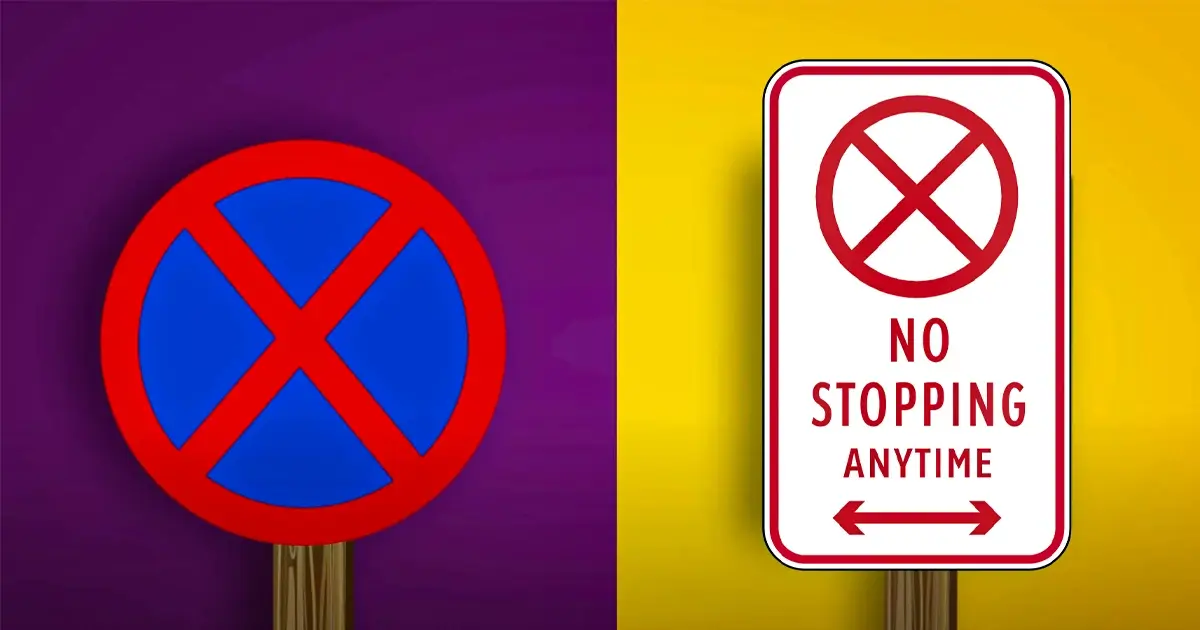Driving across the United States feels familiar to anyone who’s grown up here; miles, gallons, and feet rule the roads. But step into Europe, and the world changes. Speed is in kilometers per hour. Distances are in meters. Road signs look different, simpler, and often easier to understand. So, should the US switch to European-style road signs? Let’s break it down.
The Metric System vs. the Imperial System
The US uses the imperial system of miles, feet, and pounds. Europe, like most of the world, uses the metric system: kilometers, meters, and kilograms.
Switching systems sounds easy in theory, but in reality, it’s a massive change. Every road sign, map, and GPS interface would need updates. That’s not cheap. Experts say it could cost billions just to replace road signs across the country.
Still, many believe the metric system is easier to use. Converting meters to kilometers is simple math. But ask an American driver to think in kilometers per hour, and confusion begins. Old habits die hard.
Why Americans Resist Change
There’s a strong emotional tie to the current system. For decades, miles and gallons have shaped how Americans think about travel, fuel economy, and distances.
Changing that would mean retraining the public, adjusting driving tests, and rewriting rules in every state.
Even DuWayne Heupel, a former US Air Force officer, pointed out that Americans might resist such a shift strongly. He joked that changing road signs could cause more outrage than altering parts of the Constitution. That says a lot about how deeply people care about what they’re used to.
What Makes European Road Signs Different?
European road signs are designed for quick understanding. They rely more on symbols and less on words.
For example, instead of “STOP AHEAD,” you might see a simple red triangle with a clear icon. This design helps drivers from different countries communicate visually without worrying about language barriers.
In contrast, many US signs are text-heavy, think “YIELD AHEAD” or “NO PASSING ZONE.” While clear, they take longer to read, especially for international visitors.
Would European Signs Make US Roads Safer?
Possibly. Symbol-based signs reduce distraction and help drivers react faster.
For instance, a sharp-turn warning in Europe is shown with a bold, easy-to-spot icon. You don’t need to read anything; your brain just gets it.
If the US adopted similar visuals, it could make highways safer for both locals and tourists. However, it would take time for everyone to learn what each symbol means. That learning curve could cause confusion at first.
The Cost and Effort of Change
Let’s talk about money. Updating millions of road signs isn’t just a design job; it’s a full national project.
Every highway, every street, and every GPS would need to align with the new standard. Even digital maps like Google Maps and Apple Maps would need recalibration.
It’s not just about switching to kilometers, it’s about retraining minds and machines. That’s why most experts agree it’s not worth the cost, at least not right now.
A More Practical Middle Ground
Instead of a full switch, some suggest a hybrid approach.
For example, highways could show both miles and kilometers, like Canada does. This would help international travelers without confusing American drivers.
It’s also a step toward global consistency, especially as car tech evolves. Electric vehicles and smart dashboards already display both systems, so dual-unit signs could bridge the gap naturally over time.
Also Read
- Nearly 30% of UK Drivers Believe Car Tax Should Be Based on Mileage — Survey
- Why Planes and Boats Escaped the Luxury Tax But Cars Didn’t
- Australia’s Headlight Confusion: Authorities Warn Drivers After Viral $250 Headlight Rule Goes Wild Online
- 2025 Hyundai Venue Facelift Launched in India – Full Details, Variants, and Price
- Royal Enfield Bullet 650 Unveiled at EICMA 2025: A Classic Legend Returns
Final Thoughts
Switching to European-style road signs might sound smart on paper. It could make driving easier for foreigners and create a global standard.
But the reality is complex. The cost, resistance, and nationwide effort required make it nearly impossible in the near future.
For now, the US will likely stick with miles and text-heavy signs, a tradition that feels as American as the open road itself.
Still, one thing’s certain: as cars become smarter and more connected, the conversation isn’t over. The future of road signs might just be digital, not metric or imperial, but something entirely new.
